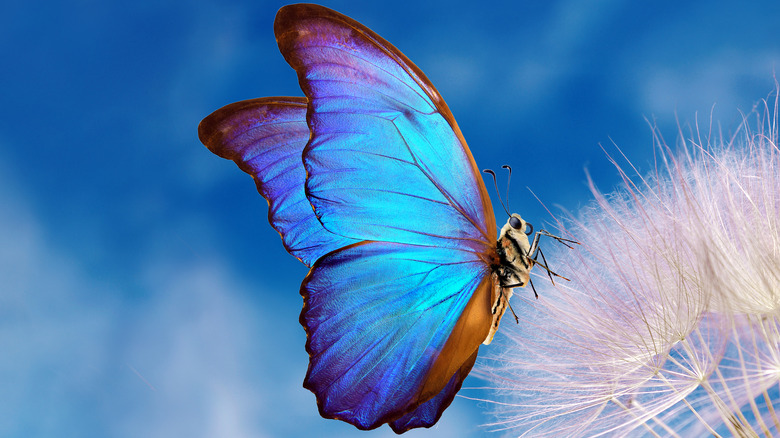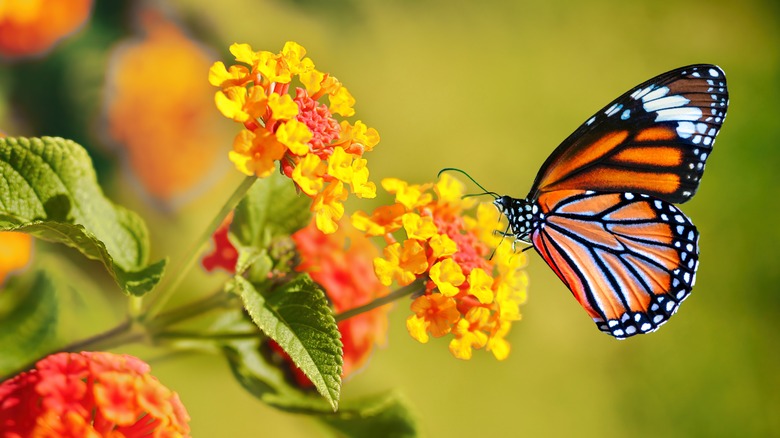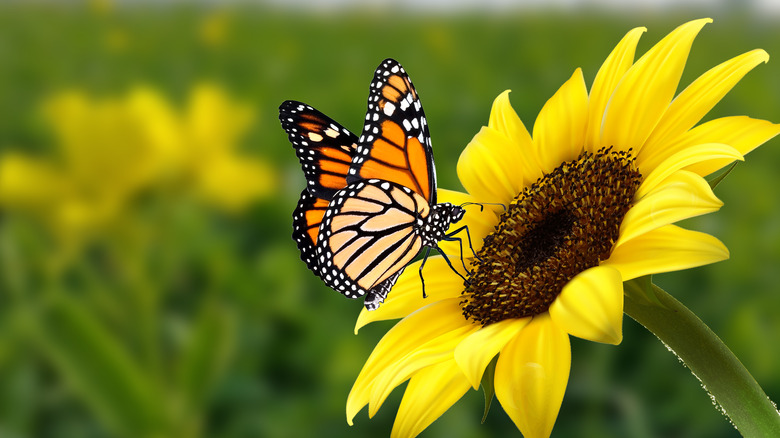How Butterflies Use Their Feet To Taste Their Food
Some creatures on this fascinating planet of ours are just stunningly beautiful. Vivid coloring; perfect, elegant forms; graceful movements ... it's difficult to believe that they occur in nature.
The butterfly is just one example. These colorful creatures come in all shapes and sizes, and can be dramatically different from one species to the next. The Lepidopterists' Society reports that around 20,000 different species of butterfly have been identified and cataloged around the world, and that many of them boast fantastically bright colors for a range of reasons. "Colors may ... communicate distastefulness to predators such as birds," the outlet reports, also detailing the fact that butterflies, generally active during the day (unlike most moths, their fellow Lepidoptera), send messages to each other via their vibrant bodies.
The intriguing nature of butterflies is far more than just skin-deep, however. Within those remarkable, delicate bodies, some unique things are happening on a biological level.
The familiar, human way of eating doesn't apply
Humans have the luxury of both tasting and eating food with their mouths. Our sense of taste is, naturally, largely controlled by the taste buds. The National Institute on Deafness and Other Communication Disorders reports that we have about 10,000 taste buds at birth, and that they kick in as a response to chemical and molecular changes in our mouths when we eat.
It's a convenient and logical system, though it is also flawed. For one thing, speaking, coughing, sneezing and other bodily responses occurring at the same time as eating can lead to choking risks. The passage from the nose to the throat, which enables our sense of smell to further enhance our sense of taste, can also be easily compromised by sinus issues and blocked noses.
Oh, to be a butterfly. These magnificent insects have a very different way of both tasting their food and eating it. Unconventional ways, certainly, but you'll never see a butterfly held back by the pesky common cold at mealtimes. They eat using their curious curly proboscis, it seems, and they taste their food through their feet.
The chemoreceptors are found in a butterfly's feet
In August 2011, Daria Monaenkova et al released the study "Butterfly proboscis: combining a drinking straw with a nanosponge facilitated diversification of feeding habits" (via The Royal Society Publishing). From the title alone, it's clear what a versatile body part the proboscis is. It enables the insect to "drink liquids from rotting fruit and wet soil, as well as nectar from floral tubes," a convenient sort of tube that stretches to take advantage of any food source that happens to be available.
"Plateau instability causes liquid bridges to form in the food canal, which are transported to the gut by the muscular sucking pump in the head," the scientists continue. In short, the brilliant biology of butterflies allows them to feed on all sorts that their fellow insects can't. What the proboscis doesn't do, however, is control the butterfly's sense of taste.
The Royal Society for the Protection of Birds states that butterflies taste through chemoreceptors. Like taste buds, these allow the butterfly to determine whether a taste will be salty, sweet, or other base tastes. Chemoreceptors are, intriguingly, found in the butterfly's feet. As the RPSB reports, butterflies have a crucial role to play in pollination efforts for various plants, so it's equally important that they have trusty ways of finding it. Best foot forward, then.


